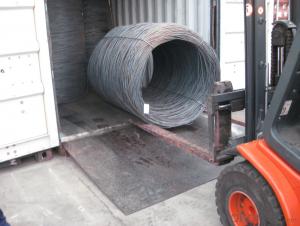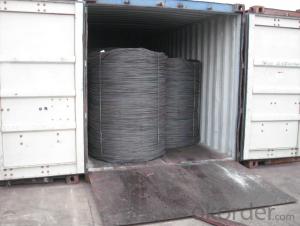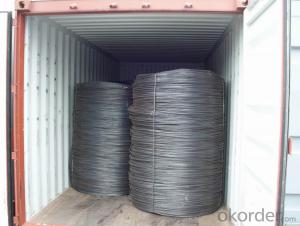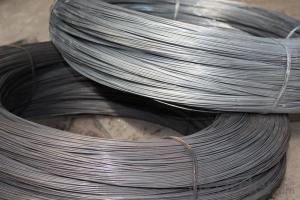SAE1006Cr Carbon Steel Wire Rod 11mm for Welding
- Loading Port:
- Shanghai
- Payment Terms:
- TT OR LC
- Min Order Qty:
- 100 m.t
- Supply Capability:
- 30000 m.t/month
OKorder Service Pledge
OKorder Financial Service
You Might Also Like
Item specifice
Description of SAE1006Cr Carbon Steel Wire Rod 11mm for Welding:
OKorder is offering Color Coated Steel Coil Prepainted Steel Coil at great prices with worldwide shipping. Our supplier is a world-class manufacturer of steel, with our products utilized the world over. OKorder annually supplies products to European, North American and Asian markets. We provide quotations within 24 hours of receiving an inquiry and guarantee competitive prices.
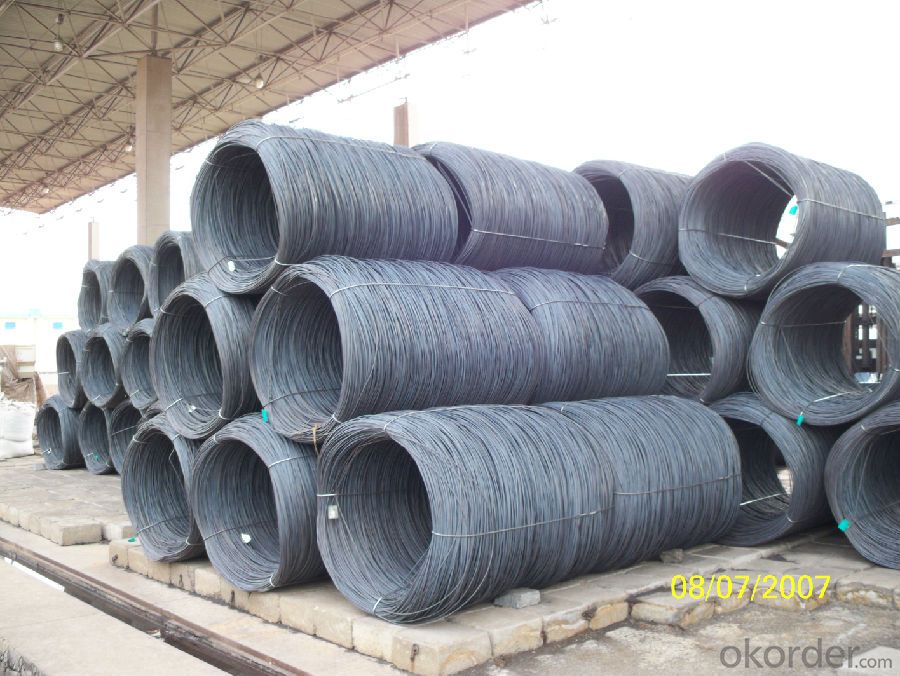
Applications of SAE1006Cr Carbon Steel Wire Rod 11mm for Welding:
Color Coated Steel Coil Prepainted Steel Coil are ideal for structural applications and are widely used in the construction of buildings and bridges, and the manufacturing, petrochemical, and transportation industries.
Main Product Features of SAE1006Cr Carbon Steel Wire Rod 11mm for Welding:
· Premium quality
· Prompt delivery & seaworthy packing (30 days after receiving deposit)
· Corrosion resistance
· Can be recycled and reused
· Mill test certification
· Professional Service
· Competitive pricing
Specifications of SAE1006Cr Carbon Steel Wire Rod 11mm for Welding:
PPGI:
1, Introduction: Color coated steel coils(sheets), i. E. PPGI, also called prepainted steel coils(sheets), are made of galvanized steel coils(sheets) with polymer coatings as surface. It's a new enclosure material and building board with characteristics of light-weighted, heat preserved&insulated, easily installed with bright colors.
2, Production Process: Pretreatment(Degreasing)_Drying_Chromating_Paint Basic Oil_Cooling_Drying_Color Coating_Cooling_Film-covering_Rolling Up
3, Characteristics:
Good at corrosion resistence. Besides zinc coating of the basic plate of galvanized steel sheet, the color coating as the surface has double lifetime to ensure better anticorrosion effect.
With excellent cold bending molded manufacturablity, PPGI products can be processed or directly used as final product. As being light-weighted and conveniently transported, they're widly used to replace wood to save energy.
4.There're thousands of colors can be chosen as per different application. Any color plays well in decoration.
No pollution with high recycling rate, PPGI coils and sheets are strongly recommended as enviroment-friendly products by the government.
5, eye bands and 4 circumferential bands in steel, galvanized metal fluted rings on inner and outer edges, galvanized.
| commodity | SAE1006Cr Carbon Steel Wire Rod 11mm for Welding |
| Techinical Standard: | JIS G3302-1998, EN10142/10137, ASTM A755 |
| grade | Q195,Q215,Q235,SAE1006,SAE1008 SAE1006Cr |
| Types: | Mesh welding |
| Base metal | galvanized, galvalume, cold rolled steel |
| Thickness | 0.14-1.0mm(0.16-0.8mm is the most advantage thickness) |
| Width | 610/724/820/914/1000/1200/1219/1220/1250mm |
| Type of coating: | PE, SMP, PVDF |
| Zinc coating | Z60-150g/m2 or AZ40-100g/m2 |
| Top painting: | 5 mic. Primer + 15 mc. R. M. P. |
| Back painting: | 5-7 mic. EP |
| Color: | According to RAL standard |
| ID coil | 508mm610mm |
| Coil weight: | 2--3MT |
| Package: | Properly packed for ocean freight exportation in 20'containers |
| Application: | Industrial panels, roofing and siding for painting/automobile |
| Price terms | FOB, CFR, CIF |
| Payment terms | 20%TT in advance+80% TT or irrevocable 80%L/C at sight |
| delivery time | 25 days after recepit of 20% TT |
| Remarks | Insurance is all risks |
| MTC 3.1 will be handed on with shipping documents | |
| We accept SGS certificatation test |
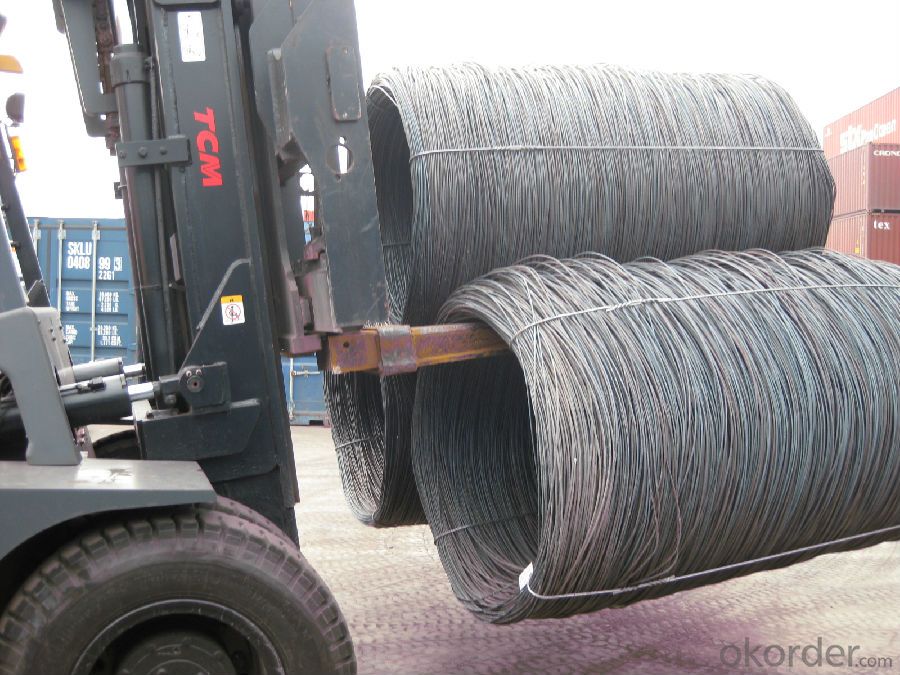
FAQ of SAE1006Cr Carbon Steel Wire Rod 11mm for Welding:
Q1: Why buy Materials & Equipment from OKorder.com?
A1: All products offered byOKorder.com are carefully selected from China's most reliable manufacturing enterprises. Through its ISO certifications, OKorder.com adheres to the highest standards and a commitment to supply chain safety and customer satisfaction.
Q2: How do we guarantee the quality of our products?
A2: We have established an advanced quality management system which conducts strict quality tests at every step, from raw materials to the final product. At the same time, we provide extensive follow-up service assurances as required.
Q3: How soon can we receive the product after purchase?
A3: Within three days of placing an order, we will begin production. The specific shipping date is dependent upon international and government factors, but is typically 7 to 10 workdays.
Q4: What makes stainless steel stainless?
A4: Stainless steel must contain at least 10.5 % chromium. It is this element that reacts with the oxygen in the air to form a complex chrome-oxide surface layer that is invisible but strong enough to prevent further oxygen from "staining" (rusting) the surface. Higher levels of chromium and the addition of other alloying elements such as nickel and molybdenum enhance this surface layer and improve the corrosion resistance of the stainless material.
Q5: Can stainless steel rust?
A5: Stainless does not "rust" as you think of regular steel rusting with a red oxide on the surface that flakes off. If you see red rust it is probably due to some iron particles that have contaminated the surface of the stainless steel and it is these iron particles that are rusting. Look at the source of the rusting and see if you can remove it from the surface.
- Q:What are the different shapes available for steel wire rod?
- There are various shapes available for steel wire rods, including round, square, hexagonal, and flat.
- Q:What are the main trends in the steel wire rod industry?
- The steel wire rod industry is experiencing several key trends that are shaping its future. One of the main trends is the increasing demand for steel wire rods in various industries, including construction, automotive, and manufacturing. The construction industry, in particular, is driving the demand for steel wire rods due to the growth in infrastructure projects worldwide. The automotive industry is also a significant consumer of steel wire rods for the production of components such as springs, wires, and cables. As these industries continue to expand, the demand for steel wire rods is expected to increase. Another important trend is the shift towards higher quality and more advanced steel wire rods. With the growing emphasis on sustainability and energy efficiency, manufacturers are seeking steel wire rods that offer superior strength, durability, and corrosion resistance. This has led to the development of innovative steel wire rod grades and processes that deliver enhanced performance characteristics. Additionally, the increasing use of advanced technologies, such as microalloying and controlled cooling, has enabled the production of high-quality steel wire rods with improved mechanical properties. Furthermore, the steel wire rod industry is witnessing a rise in the use of automation and digitization. Manufacturers are adopting advanced manufacturing technologies, such as robotics and artificial intelligence, to improve productivity, reduce costs, and enhance product quality. Automation enables efficient production processes, while digitization facilitates real-time monitoring and control of operations. These technological advancements are driving the transformation of the steel wire rod industry, making it more efficient, flexible, and responsive to market demands. Moreover, sustainability is a critical trend in the steel wire rod industry. Environmental concerns and regulatory requirements have led to increased focus on eco-friendly manufacturing processes and products. Manufacturers are implementing measures to reduce energy consumption, minimize emissions, and optimize resource utilization. This includes the adoption of energy-efficient technologies, recycling initiatives, and the development of eco-friendly steel wire rod grades. Sustainability has become a key driver of innovation and competitiveness in the industry. In summary, the main trends in the steel wire rod industry include increasing demand from various sectors, a shift towards higher quality and advanced products, the adoption of automation and digitization, and a focus on sustainability. These trends are shaping the future of the industry, driving innovation, and creating new opportunities for manufacturers.
- Q:What are the common industry workshops for steel wire rod?
- Some common industry workshops for steel wire rod include wire drawing workshops, annealing workshops, coating workshops, and testing workshops.
- Q:How does the elongation of steel wire rod vary with different wire drawing processes?
- The elongation of a steel wire rod can vary depending on the specific wire drawing process employed. Wire drawing is a metalworking process that involves pulling a metal wire rod through a series of dies to reduce its diameter and increase its length. Different wire drawing processes, such as cold drawing or hot drawing, can impact the elongation of the steel wire rod. Cold drawing involves pulling the wire rod through a die at room temperature, while hot drawing involves heating the wire rod and then pulling it through the die. In general, the elongation of a steel wire rod tends to be greater in hot drawing compared to cold drawing. This is because the heat softens the steel, making it more ductile and easier to deform. As a result, the wire rod can undergo greater elongation without breaking or fracturing. In cold drawing, the steel wire rod undergoes less elongation due to its lower ductility at room temperature. The cold drawing process may require multiple passes through different dies to achieve the desired reduction in diameter and increase in length. However, the overall elongation may be relatively lower compared to hot drawing. Additionally, factors such as the reduction ratio, die design, lubrication, and speed of the wire drawing process can also influence the elongation of the steel wire rod. Higher reduction ratios (the difference in diameter before and after each pass) generally result in greater elongation. Proper die design and lubrication can minimize friction and improve the wire's ability to elongate. The speed of the wire drawing process can also affect elongation, as excessive speed can cause tension and decrease elongation. Overall, the elongation of a steel wire rod varies with different wire drawing processes. Hot drawing typically allows for greater elongation due to the increased ductility of the steel at higher temperatures, while cold drawing may result in relatively lower elongation. The specific process parameters and conditions, such as reduction ratio, die design, lubrication, and speed, also play a significant role in determining the elongation of the wire rod.
- Q:How is steel wire rod used in the manufacturing of wire for electrical cables?
- Steel wire rod is a crucial raw material used in the manufacturing of wire for electrical cables. It serves as the base material from which the wire is drawn and formed. The steel wire rod is subjected to a series of processes, including drawing, annealing, and coating, to transform it into a wire with the desired electrical conductivity and strength. This wire is then further processed and insulated to create electrical cables that are widely used in various applications, such as power transmission, telecommunications, and wiring installations.
- Q:How is steel wire rod used in the manufacturing of wire cables?
- Steel wire rod is used as a raw material in the manufacturing of wire cables. The wire rod is typically drawn through a series of dies to reduce its diameter and increase its length, resulting in a thinner and longer wire. This wire is then twisted or braided together to form strands, which are further twisted or braided to create a sturdy and flexible wire cable. Steel wire rod provides the necessary strength and durability required for wire cables to support heavy loads and withstand various applications such as in construction, transportation, and electrical industries.
- Q:What are the main factors influencing the choice of steel wire rod order payment refund options?
- The main factors influencing the choice of steel wire rod order payment refund options include the terms and conditions of the purchase agreement, the level of trust between the buyer and seller, the reputation and financial stability of the supplier, the ease and cost of implementing different refund options, and the overall market conditions and industry practices.
- Q:How does steel wire rod compare to other materials for similar applications?
- Steel wire rod is highly regarded for its exceptional strength, durability, and versatility, making it a superior choice when compared to other materials for similar applications. Its high tensile strength and excellent resistance to corrosion and heat allow for a wide range of uses, including construction, automotive, and manufacturing industries. Additionally, steel wire rod offers excellent flexibility and malleability, allowing it to be easily manipulated into various shapes and sizes. Its cost-effectiveness and wide availability further contribute to its superiority over other materials, making steel wire rod the preferred option for many applications.
- Q:How is steel wire rod recycled at the end of its lifecycle?
- Steel wire rod is typically recycled at the end of its lifecycle through a process called steel scrap recycling. This involves collecting the steel wire rod scrap from various sources such as manufacturing waste, construction sites, and end-of-life products. The collected scrap is then sorted and cleaned to remove any contaminants. Next, the scrap is melted down in electric arc furnaces or basic oxygen furnaces to produce molten steel. Subsequently, the molten steel is cast into new wire rod shapes through processes like continuous casting or hot rolling. Finally, the newly produced wire rod is used in various industries to manufacture different products, ensuring a sustainable and efficient utilization of steel resources.
- Q:What are the common industry conferences for steel wire rod?
- Some common industry conferences for steel wire rod include the International Wire and Cable Trade Fair, the International Wire and Machinery Association Conference, and the Steel Success Strategies Conference.
1. Manufacturer Overview |
|
|---|---|
| Location | |
| Year Established | |
| Annual Output Value | |
| Main Markets | |
| Company Certifications | |
2. Manufacturer Certificates |
|
|---|---|
| a) Certification Name | |
| Range | |
| Reference | |
| Validity Period | |
3. Manufacturer Capability |
|
|---|---|
| a)Trade Capacity | |
| Nearest Port | |
| Export Percentage | |
| No.of Employees in Trade Department | |
| Language Spoken: | |
| b)Factory Information | |
| Factory Size: | |
| No. of Production Lines | |
| Contract Manufacturing | |
| Product Price Range | |
Send your message to us
SAE1006Cr Carbon Steel Wire Rod 11mm for Welding
- Loading Port:
- Shanghai
- Payment Terms:
- TT OR LC
- Min Order Qty:
- 100 m.t
- Supply Capability:
- 30000 m.t/month
OKorder Service Pledge
OKorder Financial Service
Similar products
New products
Hot products
Related keywords
